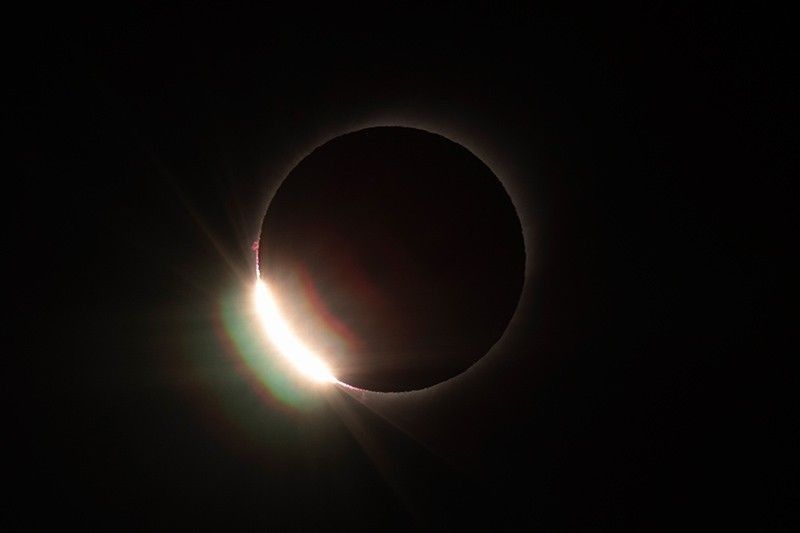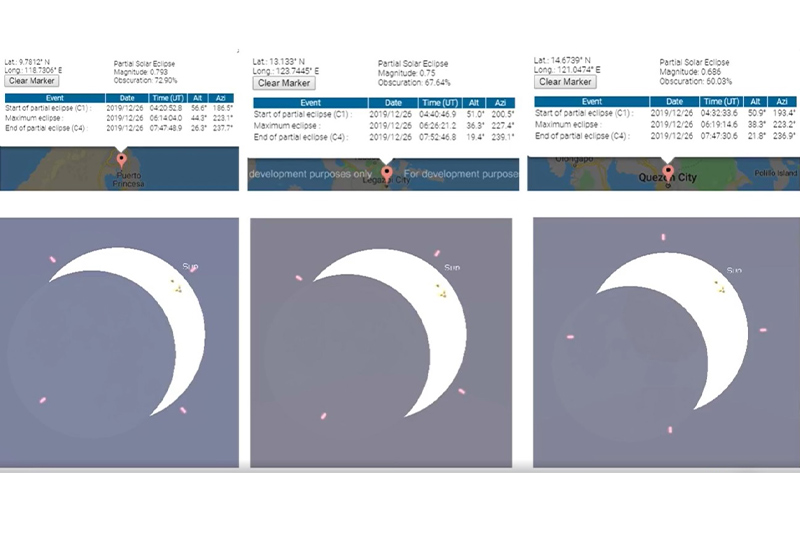How to watch the annular solar eclipse on December 26

MANILA, Philippines — Filipinos can see a "ring of fire" in the sky during the annular solar eclipse on December 26.
The annular solar eclipse, which happens when the moon is farthest from Earth, is visible by afternoon. Since the moon is farther away than usual from Earth, it appears smaller and does not block the entire view of the sun, forming a "ring of fire" effect or annulus.
Mario Raymundo, chief of PAGASA's Astronomical Observatory, said Thursday that in the Philippines, the annular solar eclipse could

"
The state weather bureau said the eclipse, which would last for over three hours, would
Quezon City and Manila can also see a partial annular eclipse at around 2 p.m., he said.
"Quezon City almost 60%

- Manila 2:19 p.m.
- Quezon City: 2:19 p.m.
- Aparri: 2:19 p.m.
- Laoag: 2:16 p.m.
- Legazpi: 2:26 p.m.
- Puerto Princesa: 2:14 p.m.
- Mactan, Cebu: 2:27 p.m.
- General Santos: 2:30 p.m.
- Balut Island: 2:30 p.m.
READ: Potential storm may enter PAR ahead of Christmas
But with an incoming potential tropical cyclone,
"Malaki ang posibilidad na talaga makaapekto ito sa aming observation. Sana po ay mas mabilis na dumaan ang nabubuong sama ng panahon diyan sa Mindanao," Raymundo said.
Don't watch with your naked eye
Engr. Dario
"Pagka talaga nag-oobserve tayo ng solar eclipses kailangan talaga natin yung proteksyon ng ating mata. Pagka tinitignan kasi natin 'yung araw kahit sandali lang ay nagkakaroon tayo ng temporary blindness so kailangan talaga natin ng mga filters."
He said PAGASA astronomers use Mylar filters but since these might be expensive he advised the public to try using unconventional tools to protect their eyes like the glass used by welders.
"So
Dela Cruz also suggested using exposed film but warned that one should not use it to stare at the eclipse for a prolonged period.
"
He said people could also fill a laundry tub with water and then stare at the reflection of the eclipse there.
Where to watch
But those who want to enjoy the phenomenon safely could go to PAGASA's Astronomical Observatory
PAGASA said
- Latest
- Trending
































